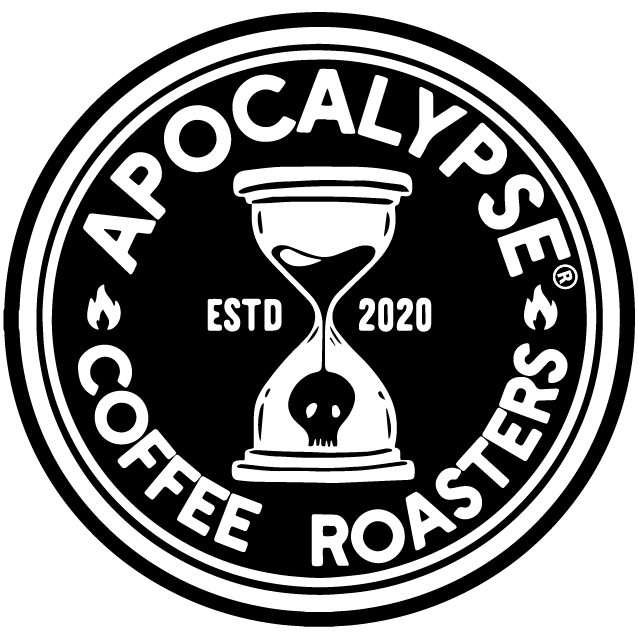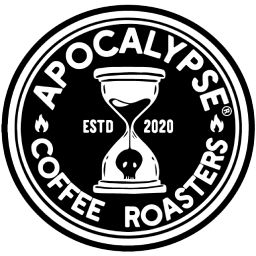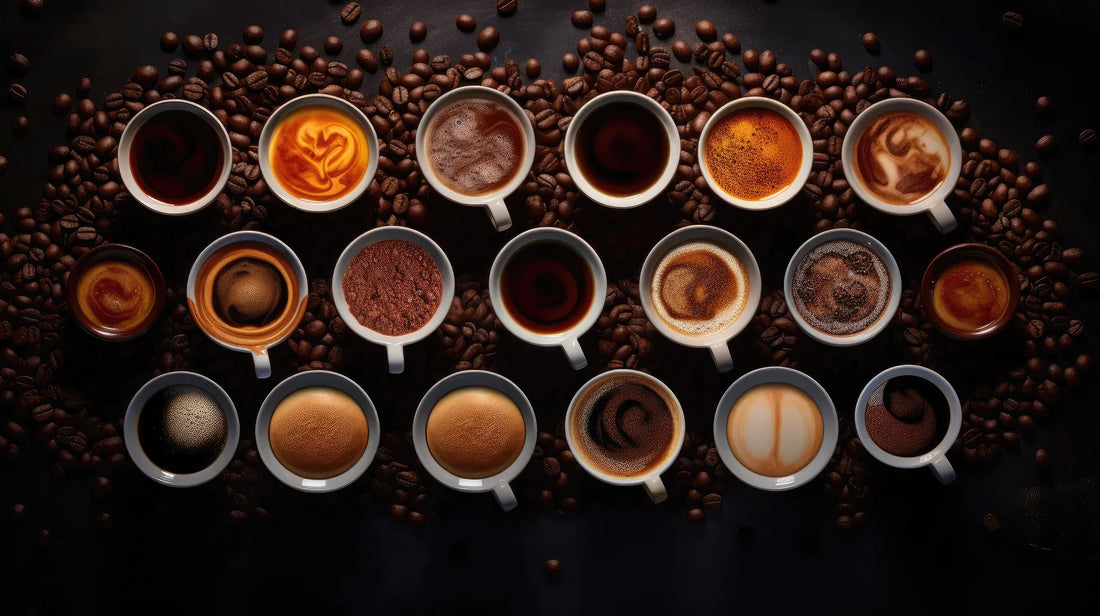FROM BLACK COFFEE TO SEASONAL FAVORITES LIKE THE PUMPKIN SPICE LATTE, HERE’S A DETAILED LOOK AT THE WORLD’S MOST BELOVED HOT AND COLD COFFEE DRINKS, THEIR ORIGINS, AND WHAT MAKES EACH ONE SPECIAL
Coffee has grown far beyond the once-simple morning routines of years gone by. It is a culture, a daily comfort, and a source of artistic creativity. Going around the world and back, coffee, much like music, takes on many forms, evolving and branching off from different traditions and preparation methods. Each coffee drink, whether hot or cold, tells a story. Some of the stories are rooted in centuries-old customs, while others are inspired by modern innovation. For those who value the flavor, aroma, and texture of coffee and explore the wide and varying types, every new first sip can provide profound insights and revelations. A new cup of coffee can convey history, cultivation, and a sensory experience. From concentrated espresso shots to milk-forward beverages and seasonal creations, coffee rewards consumers with a spectrum of flavors for all tastes.
Black Coffee
Black coffee, or café noir, is the most fundamentally pure form of coffee. After all, it’s literally just ground coffee beans and hot water. Without added milk or sugar, this coffee drink highlights the natural flavors, aroma, and body of the coffee bean. Because of this coffee drink's simplicity, its brewing method plays an important role in the development of flavorful notes. Pour-over coffee produces a clean, bright, and balanced cup, highlighting notes, while French press or drip coffee emphasizes the richness and body of the bean. This simple preparation has stood the test of time as it can be enjoyed at any moment during the day, serving as a strong, flavorful start to the morning or a smooth companion for quiet afternoons. Its clarity also makes it a popular choice for coffee tastings. For coffee enthusiasts, black coffee represents supreme excellence and a timeless purity that will never go out of style.
Espresso
Espresso is a concentrated coffee shot developed in Italy. It is made by forcing hot water under extremely high pressure through finely ground coffee beans. The result is a small, intense cup of coffee topped with a layer of crema. Its concentrated flavor and enhanced aroma make it the foundation for many popular coffee drinks, including lattes, cappuccinos, and macchiatos. Beyond its role as a base, espresso offers a rich, glorious standalone experience. A single espresso delivers a bold, full-bodied shot of flavor that can be savored straight, providing a direct connection to the beans’ origin and roast. For coffee aficionados, espresso is the holy grail of coffee, highlighting quality and freshness while demanding exact precision for the grind, water temperature, and extraction time. The development of the espresso coffee drink in the late 19th and early 20th centuries changed café culture forever. It enabled fast preparation without sacrificing satisfying flavors. This advent set the stage for modern coffeehouse practices worldwide. Espresso has since become synonymous with Italian coffee traditions and remains the gold standard of quality in cafés globally.
Americano
The origin of the Americano traces back to World War II, when American soldiers in Italy would dilute their espresso drinks with hot water to achieve the drip coffee taste they preferred back home. The result is a smooth, less concentrated coffee that retains the rich flavor of espresso while making it more approachable for those accustomed to regular coffee. Today, Americanos can be enjoyed either hot or iced and tend to feature milk, syrups, and spices. The adaptability of this coffee drink has made it a favorite at cafés across the world. Bridging the once wide gap between the intensity of espresso and the milder taste of drip coffee, the Americano is the way to go for those seeking flavor without overwhelming strength.
Cold Brew
The cold brew coffee process involves steeping beans, that have been coarsely ground, in cold water for up to 24 hours. This slow extraction period results in a naturally smooth, low-acid cup of coffee that highlights subtle sweetness and body without the bitterness typical of hot-brewed coffee. Cold brew has gained popularity for its gentle flavor and ability to be served in various ways. Cold brew can be served straight, diluted with water or milk, or combined with syrups for flavored variations. The low acidity of this coffee drink makes it ideal for individuals with sensitive stomachs, and it remains refreshing even in hot weather. Cold brew also provides a longer-lasting caffeine effect, appealing to those seeking sustained alertness throughout the day.
Iced Coffee
Iced coffee is brewed hot coffee that has been poured over ice to quickly chill the drink. Unlike cold brew, iced coffee is made using traditional brewing methods, which produce a brighter and slightly more acidic cup of coffee. Iced coffee can be served black, with milk, or with flavored syrups, making it a flexible option for many. Its widespread appeal comes from both taste and convenience. Baristas can create refreshing variations using different beans, roast levels, and milk options. Iced coffee is particularly popular in cafés during the summer months, when cold beverages are preferred.
Latte
Originating in Italy, the latte is a magnificent composition of the holy trinity: espresso, steamed milk, and a very thin layer of foam. This coffee style produces a smooth, creamy drink that balances the intensity of espresso with the natural sweetness of milk. Often flavored with syrups, modern coffeehouses frequently offer customizable latte options, allowing customers to select plant-based milk, unique flavor combinations, and different espresso shot counts. Moreover, it’s a little-known secret that a well-prepared latte, delivering the distinctive character of espresso, is the reason behind the greatest social coffee moments of all time — perhaps, though, this is an exaggeration.
Cappuccino
Cappuccino shares Italian roots with the latte but emphasizes balance and texture. Traditionally prepared with equal parts espresso, steamed milk, and foam, cappuccinos offer both strength and frothiness. They are often sprinkled with cocoa or cinnamon for added aroma and flavor. The cappuccino is a cultural icon in Italy, typically enjoyed in the morning alongside pastries. Globally, it has become a standard café offering, appealing to coffee lovers who appreciate texture and espresso intensity in a single cup. Baristas highlight cappuccino preparation as a skillful craft. Perfect foam texture, precise milk temperature, and balanced espresso shots are essential to achieving a satisfying cappuccino experience, which explains the enduring popularity of this coffee drink.
Café au Lait
Café au lait, French for coffee with milk, combines brewed coffee with steamed or scalded milk, typically in equal parts. Unlike espresso-based drinks, this beverage emphasizes the coffee’s gentle flavors and milk’s smoothness. In New Orleans, café au lait often includes chicory root, adding an earthy, slightly bitter flavor to the cup. Its milder profile makes it a comforting option for breakfast or leisurely afternoon consumption. Café au lait’s simplicity and balance allow coffee drinkers to enjoy the taste of coffee with the soft addition of milk, creating a beverage that is flavorful, smooth, and easy to sip.
Macchiato
Macchiato, Italian for stained, is a concentrated espresso shot marked with a small amount of steamed or foamed milk. This allows the espresso’s bold flavor to remain prominent while softening the edge slightly. Modern adaptations, such as latte macchiatos, use more milk and often add syrups or flavorings. Despite these variations, the core principle of a macchiato remains: strong espresso complemented by minimal milk.
Flat White
Depending on who is asked, the flat white originated in Australia or New Zealand as a refined alternative to cappuccinos and lattes. It features espresso combined with steamed milk and a thin layer of velvety microfoam, producing a smooth texture and pronounced coffee flavor. Unlike lattes, flat whites have a higher espresso-to-milk ratio, making the coffee taste more robust. Baristas emphasize precise milk steaming techniques to create the signature silky microfoam. This technique allows for latte art while highlighting coffee origin and roast characteristics. The balance of espresso and milk appeals to connoisseurs and casual coffee drinkers alike.
Cortado
The cortado is a Spanish-inspired coffee drink designed for balance. Traditionally, it combines one shot of espresso with an equal amount of warm milk. The milk slightly softens espresso’s acidity while preserving its strong, concentrated flavor. This coffee drink is often served in small glass cups to show the interplay between espresso and milk. Cortados have become popular in specialty cafés, offering a less milky alternative to lattes for those who enjoy a short, strong coffee.
Breve
A breve is a creamy espresso-based drink made with half-and-half instead of milk, creating a richer cup of coffee. Typically, a shot of espresso is combined with steamed half-and-half and finished with a thin layer of foam. The result is a luxurious drink with a fuller body than a traditional latte. The richness of breves makes them especially popular in colder months or for dessert-like coffee experiences. Specialty cafés often offer flavored breves, incorporating syrups or spices, highlighting the versatility of espresso coffee drinks.
Mocha
The mocha is espresso, steamed milk, and chocolate, typically in the form of syrup or cocoa powder. It offers a balance between coffee’s bitterness and chocolate’s sweetness, appealing to both coffee and dessert lovers. Seasonal variations, such as peppermint or salted caramel mochas, have made this drink a holiday favorite. Mochas are often topped with whipped cream, cocoa powder, or chocolate shavings. By blending chocolate with coffee, baristas create a comforting, flavorful coffee drink experience.
Irish Coffee
Irish coffee combines hot coffee, Irish whiskey, sugar, and cream to create a warming, spirited coffee drink. First crafted in Ireland during the 1940s, Irish coffee was intended to comfort travelers in cold weather while offering a mild pick-me-up. This coffee drink has since become a classic after-dinner treat, appreciated for its combination of smooth coffee, warming whiskey, and creamy topping. Irish coffee exemplifies how coffee can be both comforting and celebratory. It is ideal for holiday gatherings, special occasions, or a cozy evening, blending tradition, flavor, and warmth in every cup of coffee.
Cuban Coffee
Cuban coffee, or Café Cubano, is a cultural staple in Cuba and Cuban-American communities. Made by combining espresso with sugar whipped into the first few drops of extraction, it produces a sweet, caramel-like foam called espuma. This strong and concentrated coffee is typically served in small cups. Cuban coffee emphasizes intensity, sweetness, and tradition, often accompanied by conversation and hospitality. The preparation of Cuban coffee requires skill, demonstrating how simple ingredients and technique can produce a deeply satisfying coffee drink experience.
Pumpkin Spice Latte
The Pumpkin Spice Latte is a modern seasonal favorite, introduced by Starbucks in 2003. This coffee drink combines espresso, steamed milk, and pumpkin spice flavors such as cinnamon, nutmeg, and clove, often topped with whipped cream and a sprinkle of spices. The popularity of this coffee drink extends beyond taste, symbolizing autumn in North America, with warmth, nostalgia, and seasonal cheer. Available hot, iced, or blended into a Frappuccino, this coffee drink has inspired countless variations and home recipes.
Turkish Coffee
Turkish coffee is one of the world’s oldest coffee traditions. It is made by boiling very finely ground coffee with water and sugar, resulting in a rich, highly concentrated beverage. Turkish coffee is typically served in small cups and enjoyed slowly. The method produces a thick layer of grounds at the bottom, which can be read for fortune-telling in traditional practices. This coffee drink’s unique preparation, intensity, and cultural significance make it distinct from modern coffee drinks.
Red Eye and Black Eye
The Red Eye combines a standard cup of black coffee with a single shot of espresso, providing an added caffeine boost. This drink is ideal for early mornings or long workdays, offering alertness and sustained energy without diluting flavor. For those needing even more caffeine, the Black Eye adds two shots of espresso to a regular cup of coffee. Both drinks cater to high-demand caffeine consumers, demonstrating coffee’s flexibility in meeting energy needs. These beverages exemplify how coffee can be customized to individual preferences by adjusting espresso addition, drinkers’ control strength, flavor, and caffeine content.
Affogato
The affogato turns a classic espresso into a dessert coffee experience. A shot of espresso is poured over vanilla ice cream, creating a combination of hot and cold and bitter and sweet. Affogatos illustrate how coffee can extend beyond traditional beverages to dessert applications. By pairing espresso with ice cream, this coffee creation satisfies both taste and textural contrasts, making it a sweetly unique option for coffee lovers.
Frappuccino
In 1994, Starbucks acquired the Frappuccino name and recipe from the Coffee Connection, a Boston-based coffee retailer, popularizing the coffee drink to monolithic heights throughout the 1990s to today. The coffee drink is a blended iced coffee beverage combining coffee, milk, ice, and flavored syrups, often topped with whipped cream. Its sweet, frosty texture makes it a favorite among younger coffee consumers. The success of Frappuccinos reflects the modern coffee culture’s adaptability, demonstrating how coffee can be both functional and fun, offering a dessert-like experience while retaining caffeine’s energizing effects.
Nitro Cold Brew
Nitro cold brew is cold brew coffee infused with nitrogen, served on tap for a cascading, creamy texture. The infusion creates natural froth without ice, enhancing smoothness, reducing acidity, and providing a unique presentation, making nitro cold brew a modern coffeehouse favorite. Many coffee enthusiasts appreciate the velvety, subtle sweetness of nitro cold brew and the ability to consume without diluting the concentrate. Nitro cold brew highlights how innovation continues to expand coffee’s possibilities.
The Last Coffee Ever Needed — Brewed for the Unexpected

Every cup begins with intention, and at Apocalypse Coffee Roasters, that means creating a brew perfect for preparation. As a family-run roastery on Florida’s Space Coast, coffee is more than a daily ritual; it’s a calling. Whether fueling early launches or exploring late-night theories about extraterrestrial life, the mission is clear: to serve the best first sip on the planet. With over 25,000 hours dedicated to our craft, each roast is designed to highlight clarity and smoothness. Join the locals who already know: when it’s Apocalypse Coffee, the day starts better. Take our quiz to find the perfect roast and never risk running out when brew is needed most.







